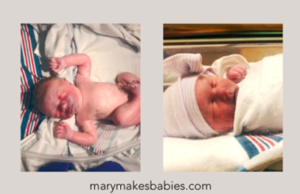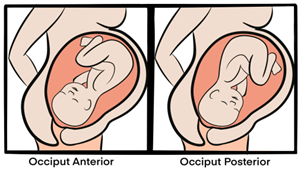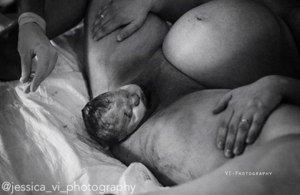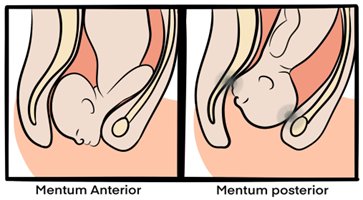Babies can get themselves into many different positions in the womb and will sometimes be born in that position. One of the more uncommon positions for a baby to present is face first, occurring in around 1 out of 500 – 600 births.
What is it?
When the baby enters the birth canal with their head hyperextended back (like they’re looking up) their face emerges first instead of the crown of their head.
Can a baby presenting face first be born vaginally?
Yes. Only when the baby is in a mentum anterior position, meaning their chin is facing the front of the mother.
Is face presentation different to Posterior?
Posterior is when the baby’s face is looking toward the front of the mother, their chin is tucked in, so the crown of their head comes out first, unlike the Mentum Anterior position (face first)
RISKS
- Prolonged labor
- Facial trauma
- Facial edema (fluid buildup in the face, often caused by trauma)
- Skull molding (abnormal head shape that results from pressure on the baby’s head during childbirth)
- Respiratory distress/difficulty due to airway trauma and edema
- Spinal cord injury
- Abnormal fetal heart rate patterns
- Low Apgar score
These images show how the swelling and bruising settles down over a short time.

You can read Mary’s face presentation birth story on her website:
www.marymakesbabies.com
CONTRAINDICATIONS FOR VAGINAL BIRTH
- Signs of foetal distress
- Labour is not progressing
- Baby fails to rotate to MA position
- Persistent brow presentation
A face presentation in Action!

-Tap here to read one woman’s incredible experience birthing a face presenting baby vaginally
– This story shares the experience of a mum who had an emergency C-section due to face presentation
POSTERIOR – SUNNY SIDE UP
What is it?
Generally, babies will be born head down, facing to the back of their mother, when a baby is born posterior, they are head down, facing the mother’s abdomen.
Can a posterior baby be born vaginally?
Yes, posterior babies can safely be born vaginally, however labour is often reported as longer and more painful.
Can a baby turn from posterior to anterior?
Babies can turn at any point during pregnancy, labour and birth. Around 90% of posterior babies turn during labour on their own. They can also be turned manually if the cervix is fully dilated.

TIPS TO AVOID A POSTERIOR BABY
- Avoid reclining back.
- When sitting, keep knees below pelvis and a straight back
- Stay active
- Spend time in a forward leaning position e.g., on hands and knees
- Avoid positions that bring baby deeper into the pelvis (such as squatting) if baby is posterior as that will make it harder for them to rotate
Baby being born sunny side up (posterior)

POSTERIOR RISK FACTORS
- First baby
- Maternal age over 35 years
- Gestational age over 41 weeks
- African American mothers
- Previous posterior delivery
- Baby weighs 4kg or more
- Your placenta is attached to the front of your uterus (anterior placenta)
- Artificial rupture of membranes
- Use of anaesthesia (epidural)
You can see how this baby’s head moulded to fit through the vaginal canal as they emerged posterior.
My name is Cassandra Fieg, I’m a doula on the far south coast, NSW who has studied at the Doula Training Academy with Vicki Hobbs. If you’d like to connect, I’d love to hear from you.
Website:
www.sapphirecoastdoulaservices.com.au
Email:
[email protected]


